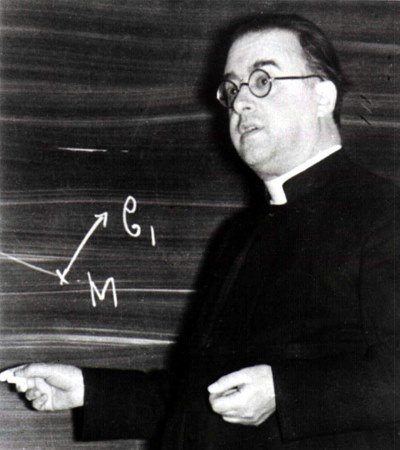Hubble’s Law
He stretches out the heavens like a canopy, and spreads them out like a tent to live in. (Isaiah 40:22, NIV)
It is I who made the earth and created mankind on it. My own hands stretched out the heavens; I marshaled their starry hosts. (Isaiah 45:12, NIV)
You may recall from chapter 2 that when the source of a wave moves toward an observer, the wave’s frequency increases from the observer’s perspective, due to the Doppler effect; and the opposite happens when the wave source is moving away. With visible light, the effect results in an apparent change of color. If a galaxy moves away from us, its light is shifted toward the red side of the color spectrum. If a galaxy moves toward us, its light is shifted toward the blue (or violet) end of the spectrum. Thus, the motion of a galaxy toward or away from us can be determined by measuring its blueshift or redshift. The precise amount of redshift or blueshift can be measured by comparing the spectral lines of light from chemical elements on the distant galaxy with the spectral lines of light emitted by those same elements here on earth.
Early in the twentieth century, astronomers were surprised to discover that most galaxies are strongly redshifted: they are speeding away from us. Prior to that discovery, nearly everyone had assumed that the overall distribution of stars throughout the universe remains constant over time. If that were the case, however, the numbers of redshifted and blueshifted galaxies should be roughly equal. Why were the vast majority of galaxies receding from us?

(1894 - 1966)
Lemaître, a Catholic priest, is yet another Christian to include in our ever-growing list of faithful scientists.
In 1927, a Belgian astronomer and physicist (who was also a Catholic priest) named Georges Lemaître proposed a novel explanation for the recession of galaxies: the universe is expanding! Lemaître suggested that space itself is being stretched out, in a way analogous to the surface of an inflating balloon. Imagine a balloon with little galaxies drawn all over it. As the balloon inflates, each galaxy gets farther away from all the others. From the perspective of a two-dimensional creature living inside one of those rubber “galaxies” on the surface of the balloon, all of the other galaxies are moving away. Similarly, according to Lemaître’s hypothesis, the very fabric of the universe is being stretched out, as though the three-dimensional space in which we live exists on the surface of a four-dimensional balloon that inflates as time goes forward.
If the universe is being “stretched out” in this way, Lemaître predicted, then galaxies farther away from us should be receding faster, on average, than galaxies nearby. To see why, imagine how things would appear to the two-dimensional creature on the inflating balloon: as the rubber stretches, the more distant parts of the balloon move away faster than those nearby. For another analogy, we can think of galaxies like raisins in a rising loaf of bread. As the dough expands, the raisins get farther away from each other, and two raisins at opposite ends of the loaf move apart faster than raisins near the same side.
Two years later, in 1929, American astronomer Edwin Hubble confirmed Lemaître’s prediction. Hubble used Cepheid variables to estimate the distances to numerous galaxies, and he compared these distances with their varying degrees of redshift. He found that all known galaxies outside the Local Group are receding from us, and those farther away are receding faster. This correlation between the distances and velocities of galaxies is now known as Hubble’s law:
The farther away a galaxy is, the faster it is moving away from us.
In addition to confirming Lemaître’s hypothesis that space itself is expanding, Hubble’s observations also provided an estimate of the present expansion rate, which is called the Hubble constant. The rate of the universe’s expansion isn’t really constant, however. The expansion rate changes over time, as we’ll discuss later in this chapter.
The discovery that space is expanding has profound implications. It means that the universe could not have existed forever. Contrary to what most secular astronomers had presumed, the universe must have had a beginning. Given the present expansion rate, the Einstein field equations imply that the entire observable universe would have been infinitesimally small in the distant past—about 13.8 billion years ago. At that point, the density and temperature of the universe would have been infinite, a condition which cannot be explained or even described by our best theories of fundamental physics. This is known as a spacetime singularity—a point in spacetime (or an “event,” in the technical sense) where the known laws of physics are mathematically undefined.
In other words, the laws of general relativity only yield meaningful predictions about earlier conditions of the universe back to 13.8 billion years in the past. At that point, the Einstein field equations are no longer well-defined, mathematically, because certain quantities are infinite. (It’s like trying to divide by zero.) The laws of quantum physics don’t work at that point either. The history of the universe cannot extend back in time any further. In fact, general relativity seems to imply that no part of physical reality—not even time itself—existed “prior” to the singularity. Spacetime simply begins there.